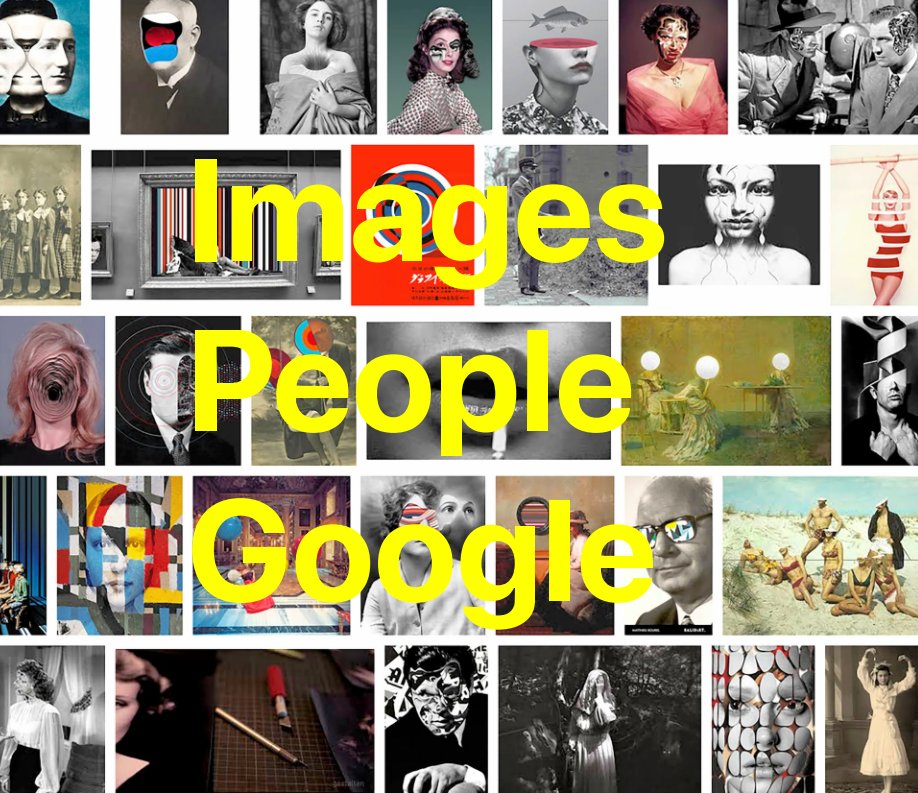Over het boek
Sometimes, the array called up by my image searches is richer than any flea market’s variety and juxtaposition. Gathered together, these images can energize each other by their contrasting proximity. Photographers are especially attracted to recording surprises, the off-beat, the desultory. The collections of images on these pages are the result of my curiosity and editing. If I hadn’t recorded these marvelous collections, they would be just so much other lost ephemera of our time. I had to act, to say, “Hold on a moment more”, and to hit “Save”.
These images are about patterns of ideas—graphic patterns, popular patterns of preference and a pattern of censorship in the images we in the United States are allowed to see. Each collection is a response by Google Images to a search command by me. The collections may be visual homographs—different images that derive from the same word, eg., “rod” could be a fishing rod, a hot rod, a stick, a gun or a man named Rod, as in Stewart or Serling. Some collections are of different iterations of the same thing: of a painting or animal.
I am fascinated by the interrelationships of the separate images: the series and sequences produced seemingly, but not really, at random. The preference pattern is an instant poll of the users in the Internet universe as to what images they select most at that moment. The results reflect the most-favored image at the top
kenmerken / functionaliteiten & details
- Hoofdcategorie: Kunstfotografie
- Aanvullende categorieën Beeldende kunst, Kunst & Fotografie
-
Projectoptie: Groot liggend, 33×28 cm
Aantal pagina's: 50 -
Isbn
- Hardcover, ImageWrap: 9781715248147
- Datum publiceren: jul 24, 2020
- Taal English
- Trefwoorden polling, collections;, censorship;, Google;, internet;
Over de maker
Richard Stanley holds a Master of Fine Art in photography degree from Rochester Institute of Technology. Noted landscape photographer, the late John Pfahl, sponsored his Master’s thesis, whose images were produced using homemade panoramic pinhole cameras and color film. Color contact prints from Stanley’s homemade pinhole cameras range up to ten inches wide by seven feet long. His work is in the collections of the International Museum of Photography at George Eastman House, the Chicago Art Institute, the Cincinnati Art Institute and many private collections. He lives in Los Angeles, where he continues to document the urbanscape through his windshield. Current work reveals a fascination with Google Images as a subject itself, the scanner as a photographic tool and the visual power of dolls, or “action figures”.


